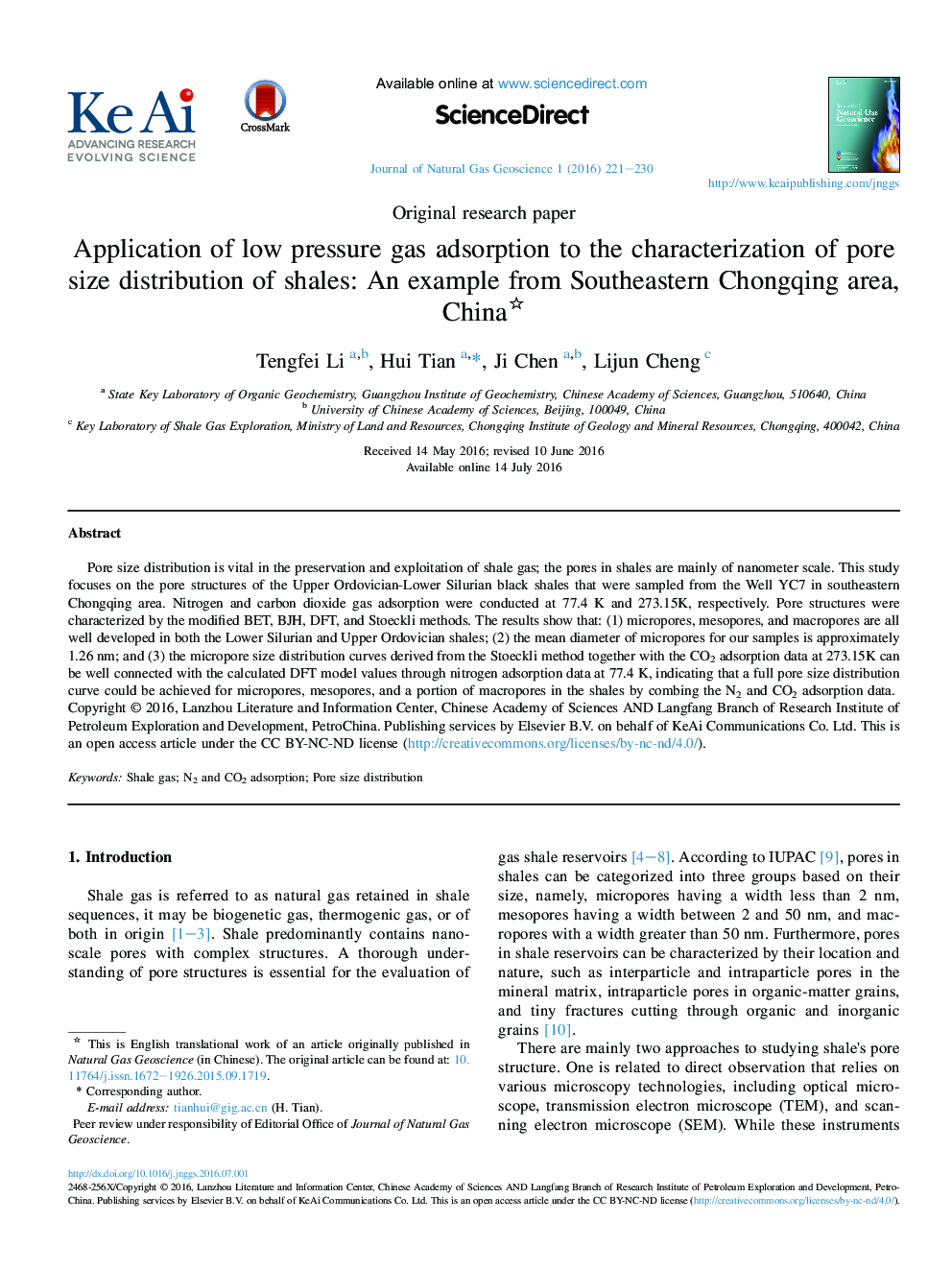| Article ID | Journal | Published Year | Pages | File Type |
|---|---|---|---|---|
| 8124275 | Journal of Natural Gas Geoscience | 2016 | 10 Pages |
Abstract
Pore size distribution is vital in the preservation and exploitation of shale gas; the pores in shales are mainly of nanometer scale. This study focuses on the pore structures of the Upper Ordovician-Lower Silurian black shales that were sampled from the Well YC7 in southeastern Chongqing area. Nitrogen and carbon dioxide gas adsorption were conducted at 77.4Â K and 273.15K, respectively. Pore structures were characterized by the modified BET, BJH, DFT, and Stoeckli methods. The results show that: (1) micropores, mesopores, and macropores are all well developed in both the Lower Silurian and Upper Ordovician shales; (2) the mean diameter of micropores for our samples is approximately 1.26Â nm; and (3) the micropore size distribution curves derived from the Stoeckli method together with the CO2 adsorption data at 273.15K can be well connected with the calculated DFT model values through nitrogen adsorption data at 77.4Â K, indicating that a full pore size distribution curve could be achieved for micropores, mesopores, and a portion of macropores in the shales by combing the N2 and CO2 adsorption data.
Keywords
Related Topics
Physical Sciences and Engineering
Earth and Planetary Sciences
Geochemistry and Petrology
Authors
Tengfei Li, Hui Tian, Ji Chen, Lijun Cheng,
